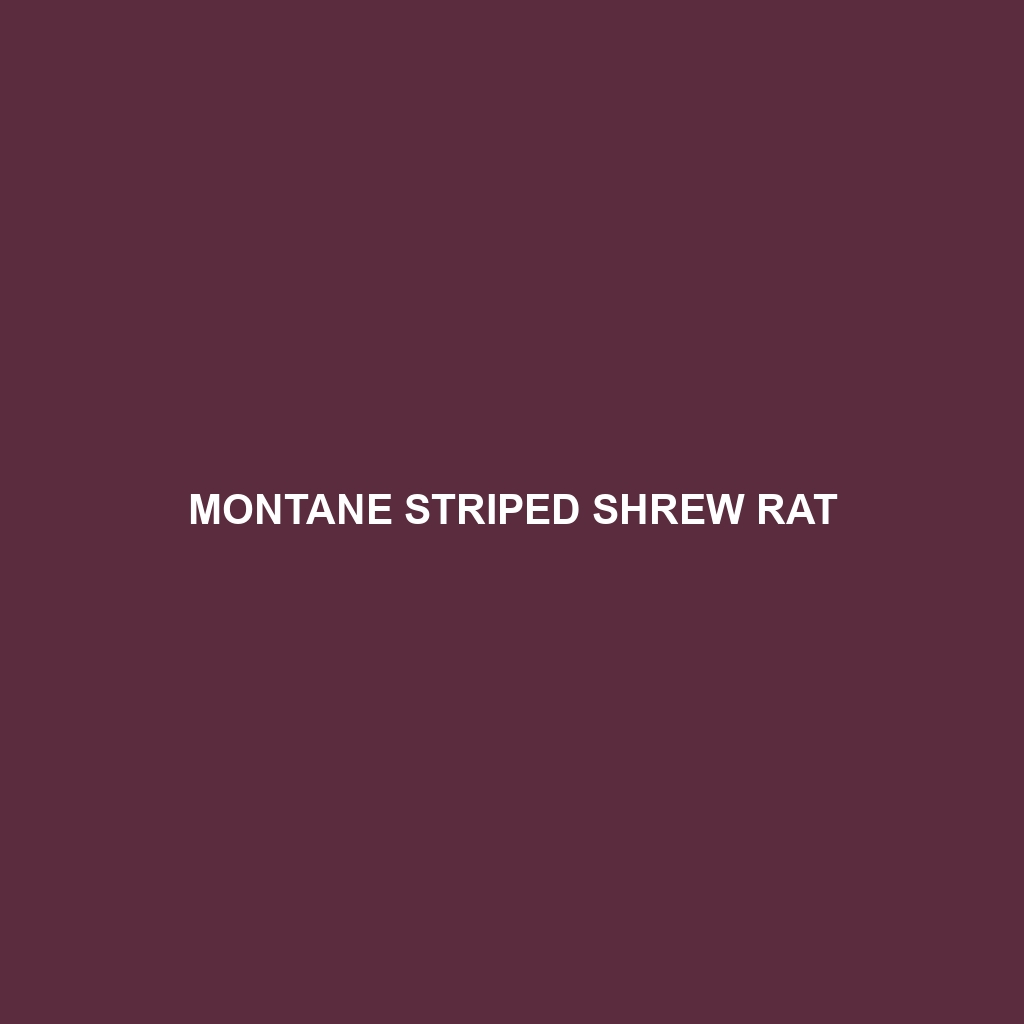Richardson’s New Guinea Mountain Rat
Common Name: Richardson’s New Guinea Mountain Rat
Scientific Name: Anonysomys richardsoni
Habitat: Richardson’s New Guinea Mountain Rat is primarily found in the mountainous regions of Papua New Guinea. This species thrives in montane forests and grassy highlands, typically at elevations between 1,500 and 3,000 meters. Its habitat is characterized by dense vegetation, often including mossy trees and an array of flowering plants, which provide both shelter and food sources for this unique rodent.
Physical Characteristics: This mountain rat typically measures about 20 to 30 centimeters in body length, with a tail that can range from 15 to 25 centimeters. Richardson’s New Guinea Mountain Rat features a thick, bushy fur coat that is predominantly dark brown or gray, providing excellent camouflage within its forest habitat. Its distinctive large ears and elongated snout enhance its sensory capabilities, allowing it to detect predators and forage effectively.
Behavior: This species is primarily nocturnal, exhibiting a variety of behaviors linked to its survival in the wild. During the night, Richardson’s New Guinea Mountain Rat is active in foraging and socializing. These rodents are known for their burrowing habits, which help them create safe nesting sites. Additionally, they are agile climbers, often seen navigating the lower branches of trees in search of food.
Diet: The diet of Richardson’s New Guinea Mountain Rat consists mainly of plant matter, including fruits, seeds, and leaves. They have also been observed consuming fungi and occasionally insects. Their feeding habits play a crucial role in seed dispersal, contributing to the regeneration of their montane forest ecosystem.
Reproduction: Richardson’s New Guinea Mountain Rat typically breeds during the wet season, which occurs from December to March. Females generally give birth to litters of 2 to 5 young after a gestation period of about 30 days. Offspring are born blind and hairless, relying heavily on their mothers for protection and nutrition during their early development stages.
Conservation Status: Currently, Richardson’s New Guinea Mountain Rat is classified as ‘vulnerable’ according to the IUCN Red List. This designation is primarily due to habitat loss from deforestation and agricultural expansion, which threatens its survival in the wild.
Interesting Facts: Richardson’s New Guinea Mountain Rat is known for its unique vocalizations, which include a series of chirps and whistles used for communication. Additionally, it has adapted remarkably to its secluded montane environment, making it an important subject of study for researchers interested in evolutionary biology.
Role in Ecosystem: As a herbivorous rodent, Richardson’s New Guinea Mountain Rat plays a significant role in its ecosystem by aiding in the seed dispersal of various plant species. This activity not only helps maintain plant diversity but also supports other wildlife that relies on these plants for food and shelter. Its presence is indicative of a healthy montane forest environment, making it crucial for ecological balance within its habitat.
